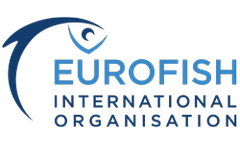Algae Biomass Production Articles & Analysis
6 articles found
Seeking a revolution in freshwater aquaculture This article was featured in Eurofish Magazine 3 2024 SmartAqua4FuturE (SAFE) is an ambitious project funded by Horizon Europe that aims to revolutionise freshwater aquaculture. The project seeks to make freshwater aquaculture more environmentally friendly while increasing its financial stability by introducing circular economy approaches. The ...
ByEurofish
Due to the low concentration of nitrate and high contents of organics, brewery effluent was not suitable for the cultivation of Spirulina sp. This work changed the nutrient profile of brewery effluent effectively by dilution, addition of nitrate, and anaerobic digestion. The result showed that the optimum dilution rate and NaNO3 addition for brewery effluent were 20% and 0.5 g/L, ...
BUCHI Mini Spray Dryer B-290: Yield and total yield determination in spray dried microalgaes Recently, microalgal biomass has been recognized as a promising alternative source of raw material for biofuel production. Algal biomass has several advantages that may help to meet the need for the global demand of transport fuels, such as rapid growth rate, high lipid content, small land usage, and ...
ByBUCHI
Department of Energy (DOE), announced $15 million in funding for three projects that will work to improve algal biomass yields to reduce production costs of algae-based biofuels and bioproducts. The projects include Global Algae Innovations (San Diego, California), Algenol Biotech LLC (Ft. Myers, Florida), and MicroBio ...
Because microalgae are known for quick biomass growth and nutrient uptake, there has been much interest in their use in research on wastewater treatment methods. While many studies have concentrated on the algal treatment of wastewaters with low to medium ammonium concentrations, there are several liquid waste streams with high ammonium concentrations that microalgae could potentially treat. ...
Water recycling is an effective way to reduce water consumption in the industrialization of microalgae-based biomass/bioenergy production. The soluble algal products (SAP) which inhibit the microalgae growth will accumulate in the recycled water. Therefore, the ozone oxidation treatment of SAP produced by Scenedesmus sp. LX1 was studied to reduce the inhibition of SAP. The experimental ...




